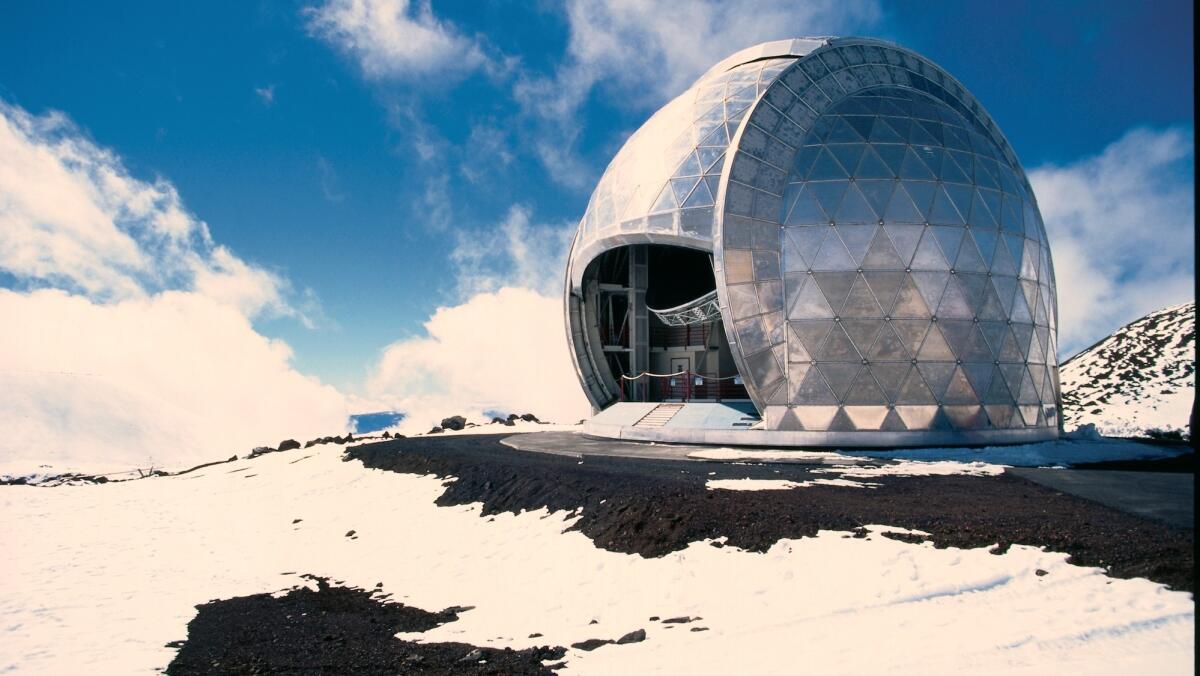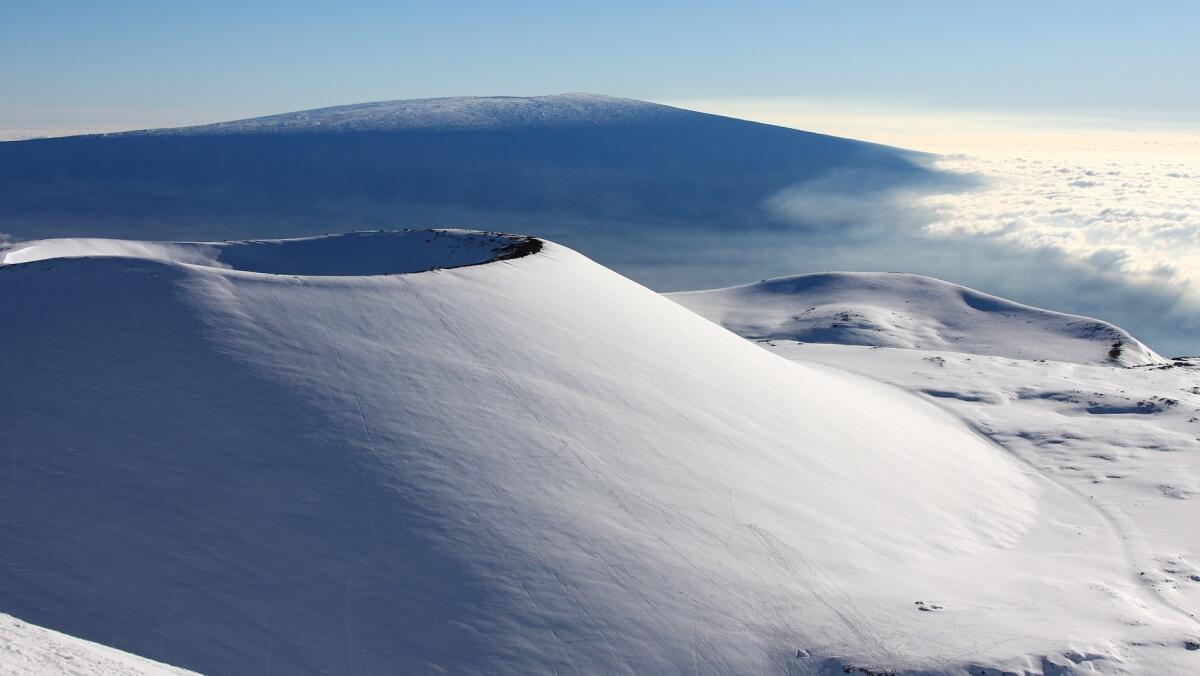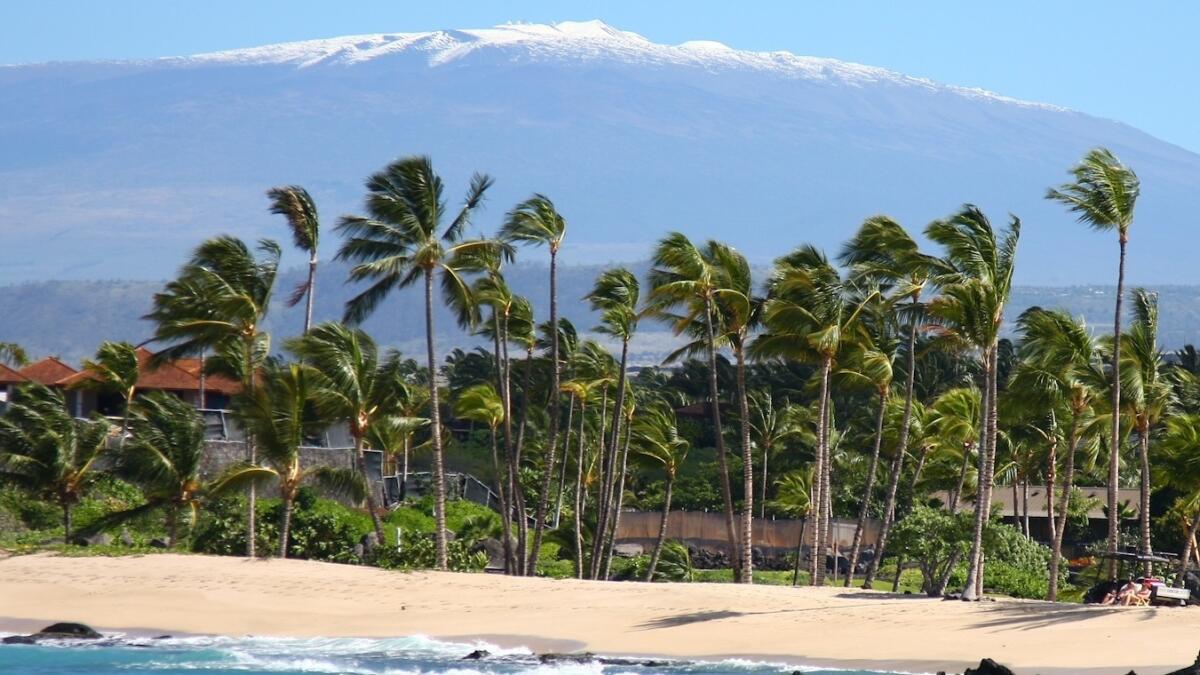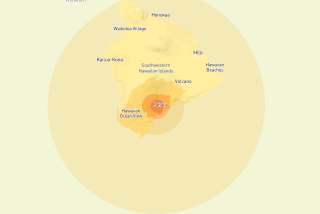Pack your heavy coat to visit this snowy volcano in Hawaii

An observatory is perched on snow-covered ground atop Mauna Kea on Hawaii Island.
Traveling to the Big Island of Hawaii this winter? Be sure to pack your swimsuit and sandals, but also include a heavy sweater and boots if you’re planning to travel to the summit of Mauna Kea.
While temperatures may be in the 80s along the beach, the summit temperature can easily drop below freezing, with storms turning the peak into a winter wonderland.
Tour operators — search on Google for “Mauna Kea tours” — offer four-wheel drive journeys to the top of the mountain year-round. At 13,796 feet, Mauna Kea is the tallest mountain in Hawaii, only a couple hundred feet shorter than Colorado’s Pikes Peak.

A cinder cone is shrouded in snow following a winter storm atop Hawaii Island’s Mauna Kea volcano.
A paved road leads to the Visitor Information Station at 9,200 feet above sea level. It’s often where many tourists turn their rental cars around because the rugged ascent that follows — along a sandy, rutted road — is intended for four-wheel-drive vehicles.
Even those can get stuck, so when the snowfall is heavy — a storm last March dropped more than a foot — officials close the summit road, canceling tours.
“The tricky part is that you have to be in it to win it,” tour operator Doug Arnott of Arnott’s Adventure Tours told me in an email.
“If we have had overnight snow or freezing rain ... and the next day dawns bright and sunny, there is a good chance” the road will reopen in time for the popular sunset tours to the summit, he said.

Despite warm sunshine along Hawaii Island’s sandy shoreline, snow is clearly visible inland atop the dormant Mauna Kea volcano.
However, guests have to be able to make it to the visitor center, where the “go or don’t go” decision is made.
Arnott’s charges about $167 for guests who drive their own vehicles to the visitor center. Add $20 for transportation from Hilo. Various refund policies apply when tours can’t reach the top.
But if you do make it up, you’ll see other-worldly scenery shrouded in snow.
The summit is dotted with a number of international observatories that take advantage of the lack of artificial light on Hawaii Island to see the stars and beyond. A sign outside one observatory cautions people to beware of falling ice.
ALSO
Hawaii: Kauai’s hidden Fern Grotto is just a boat ride away on the Wailua River
Follow explorers’ adventurous route across Ross Sea on these Antarctic cruises
Hawaii: Visit the place where ukuleles have been made for 100 years
Can Maui get any more mellow? Visit this lavender farm -- and breathe deep
More to Read
Sign up for The Wild
We’ll help you find the best places to hike, bike and run, as well as the perfect silent spots for meditation and yoga.
You may occasionally receive promotional content from the Los Angeles Times.






